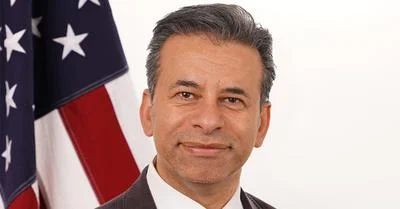IDAHO FALLS, Idaho - With almost 85 percent of the targeted buried transuranic waste removed from the Idaho Site’s Subsurface Disposal Area, EM and cleanup contractor Fluor Idaho are designing a cap to cover the 97-acre Cold War landfill and further protect the underlying Snake River Plain Aquifer.
EM, Fluor’s Environmental Restoration Program, and Fluor subcontractor Daniel B. Stephens & Associates have completed a 30-percent design package on how technical and environmental requirements will be met as the cap design proceeds. That package is being reviewed by DOE, the U.S. Environmental Protection Agency (EPA), and State of Idaho. Fluor is contractually required to submit a 90-percent design package for regulatory review by April 2020.
Since 2005, crews have removed more than 8,600 cubic meters of radioactive and hazardous waste from more than 4.82 acres of the landfill in compliance with a 2008 record of decision between DOE, EPA, and the State of Idaho. The landfill received waste in unlined pits and trenches from the now-closed Rocky Flats Plant near Denver from 1954 until 1970. The remediation project is approximately 2 years ahead of schedule with less than 1 acre remaining to exhume.
A cap that prevents the migration of rain and snowmelt through the remaining debris and contaminated soil is a key component of the record of decision and is crucial to long-term protection of the aquifer located 585 feet below the ground surface. Due to the desert climate and low rainfall conditions in eastern Idaho, a cap consisting of native soils and gravel, termed an evapotranspiration cover, is preferred over a synthetic cap.
Two ancient dry lake beds, located just 1.5 miles from the landfill, are the preferred sources of the nearly 3 million cubic yards of material required to construct the cap. Planners anticipate a barrier between the cap surface and the remaining buried waste will be up to 10 feet thick.
EM, Fluor, and Daniel B. Stephens & Associates are working on the 60-percent design for the cap. They will consider many factors and data points, including the ideal soil and plants to use, how to account for settling, and both long- and short-term maintenance needs. Studies are ongoing on the potential borrow site areas, examining how porous the soil is, its particle size, and compaction capabilities.
Source: U.S. Dept. of Energy, Office of Environmental Management







